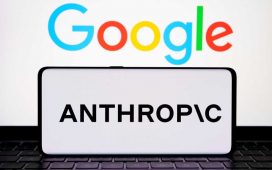AWS CEO Adam Selipsky on Tuesday premiered the star of the cloud giant’s ongoing re:Invent 2023 conference: Amazon Q, the company’s answer to Microsoft’s GPT-driven Copilot generative AI assistant.
Selipsky’s announcement of Q was reminiscent of Microsoft CEO Satya Nadella’s keynote at Ignite and Build, where he announced several integrations and flavors of Copilot across a wide range of products.
“Amazon Q can handle all of the basic productivity tasks that Copilot can, but can also be used to work across a wide range of apps across the stack, which should appeal to IT managers who want to limit the number of assistants that need to be monitored,” said Keith Kirkpatrick, research director of enterprise applications at The Futurum Group.
Amazon Q, which builds on AWS’ data and development expertise of 17 years, can be used by enterprises across a variety of functions including developing applications, transforming code, generating business intelligence, acting as a generative AI assistant for business applications, and helping customer service agents via the Amazon Connect offering.
Amazon Q as a generative AI assistant for business applications
Amazon Q, as a generative AI assistant for business applications, can be used to have conversations, solve problems, generate content, gain insights, and take action by connecting to your company’s information repositories, code, data, and enterprise systems, the company said. It is accessed via a browser and web interface — in other words, it’s a web-based application.
In order to use Q as an assistant for business applications, enterprises need to configure the generative AI assistant by connecting it to existing data sources, which can include AWS’ S3 storage service as well as applications from vendors including Salesforce, Microsoft, Google, and Slack. Support for over 40 applications and services are supported out of the box.
The recipe seems very similar to Palo Alto-based startup Glean’s assistant, dubbed Glean Chat.
“Once connected, Amazon Q starts indexing all of your data and content, learning everything there is to know about your business. This includes understanding the core concepts, product names, organization structure, all the details that make your business unique. As well as indexing the data from these sources,” said Matt Wood, vice president of AI at AWS.
“Q also uses generative AI to understand and capture the semantic information which makes your business unique. This additional semantic information is captured as vector embeddings, allowing Q to provide highly relevant results which are tailored to your specific company and industry,” Wood added.
Wood said that when an employee attempts a query inside Q, the generative AI assistant creates a set of input prompts at the back end, using all the business infomration available to find relevant data and form a response, while displaying sources.
In cases where queries require answers containing information to which users are not allowed access, the assistant will not display a response, Wood said, adding that further customization of the assistant can be done by enterprise administrators to control access to data and weed out inappropriate questions.
Q can also be used to gain insights from Word documents, Excel or CSV files by uploading it directly at the interface, AWS said. The assistant also can be used to raise and update requests across applications such as ServiceNow and Jira.
Amazon Q as a generative AI assistant for business applications is currently in preview and can be accessed via the company’s US East (Virginia) and US West (Oregon) regions.
AWS, however, has not revealed the base foundation model that Q uses.
Amazon Q features for assisting developers
AWS, according to Selipsky, has baked many features into Amazon Q to assist developers, including a natural language conversation feature that allows programmers to ask questions while building applications.
This feature, which can be accessed via the AWS Management Console by selecting Q from the menu, can research best practices and iterate information on how to build applications on AWS, without requiring users to to shift focus away from the AWS console, Selipsky said during his keynote.
The generative AI assistant can take several factors — such as frequency of use — into consideration while answering queries about applications, potentially suggesting relevant databases or other service offerings, the CEO added.
Amazon Q’s conversational Q&A capability, which is currently in preview in all commercial AWS Regions, has also been integrated into AWS’ Console Mobile Application, Documentation portal and other websites, as well as Slack and Teams, through the AWS Chatbot.
Q can also help developers choose the right AWS EC2 instance they want to run, the company said, adding that the generative AI assistant can also be used to troubleshoot and solve errors directly from within the console.
“Amazon Q provides concise analysis of the error which helps you to understand the root cause of the problem and the proposed resolution. With this information, developers can follow the steps described by Amazon Q to fix the issue,” AWS wrote in a blog post, adding that the console has a built-in option dubbed “Troubleshoot with Q” to help launch the feature.
This particular feature is currently available in preview in the US West (Oregon) region for EC2, S3, Amazon ECS (Elastic Container Service), and AWS Lambda.
Q can also be used from within the console to troubleshoot network-related issues.
For this capability, Amazon Q works with Amazon VPC Reachability Analyzer to check connections and inspect network configurations to identify potential issues, the company said, adding that this capability is currently available in preview in the US East ( Virginia) region.
Amazon Q integration inside IDEs, CodeCatalyst
AWS has also started integrating Q inside integrated development environments (IDEs) such as Visual Studio Code and JetBrains.
This feature allows developers to ask questions and get help within the IDE by chatting with Amazon Q or invoking actions by typing “https://www.computerworld.com/” in the chat box, the company said, adding that developers need to update to the latest AWS Toolkit and sign into CodeWhisperer to get access to this capability.
“Once developers are signed in to Amazon CodeWhisperer, it will automatically activate the Amazon Q conversational capability in the IDE. With Amazon Q enabled, developers can now start chatting to get coding assistance,” the company wrote in a blog post.
In addition, Q can be used to add new features to an application from within the IDE or Amazon CodeCatalyst.
“Developers can go from a natural language prompt to application features in minutes, with interactive step-by-step instructions and best practices, right from your IDE. With a prompt, Amazon Q will attempt to understand your application structure and break down your prompt into logical, atomic implementation steps,” the company said.
This capability can be used within the IDE by invoking an action command —/dev — in Q and describing the task it needs to process and respond.
Q has additional capabilities, which can be accessed from CodeCatalyst, to help developers ship features faster.
Developers can assign a new or an existing issue to Amazon Q, and it will process an end-to-end development workflow, the company said, adding that Q will review the existing code, propose a solution approach, seek feedback from developers on the approach, generate merge-ready code, and publish a pull request for review.
Additionally, Amazon Q can also be used to transform code, akin to IBM Watsonx using generative AI to translate COBOL code into Java.
This feature, which can be accessed via AWS CodeWhisperer within the AWS Toolkit, can help developers cut down time to upgrade their applications, Selipsky said, adding that AWS employees used the feature to update their Java applications.
The code transformation feature, which too is in preview, can be availed via the AWS Toolkit for IntelliJ IDEA and the AWS Toolkit for Visual Studio Code.
Copyright © 2023 IDG Communications, Inc.












